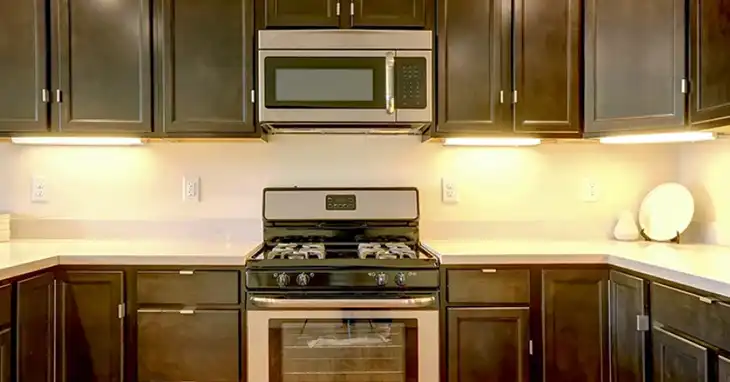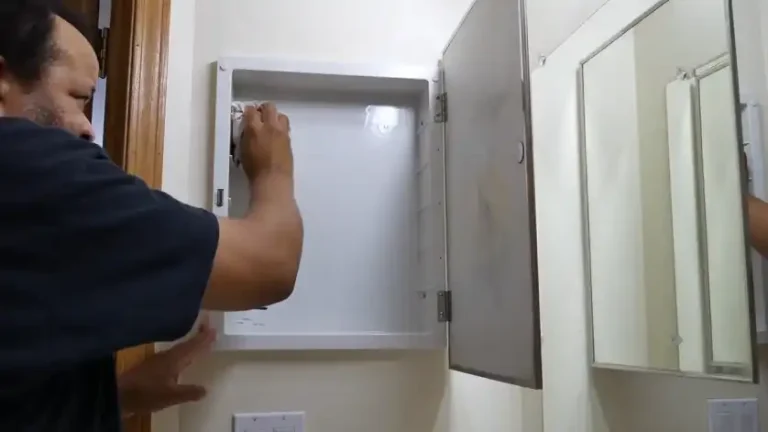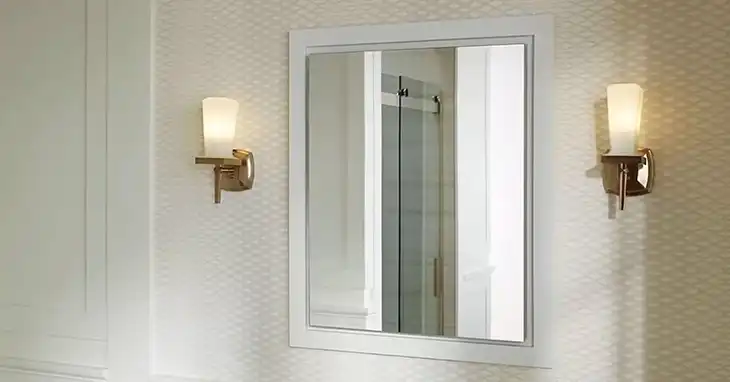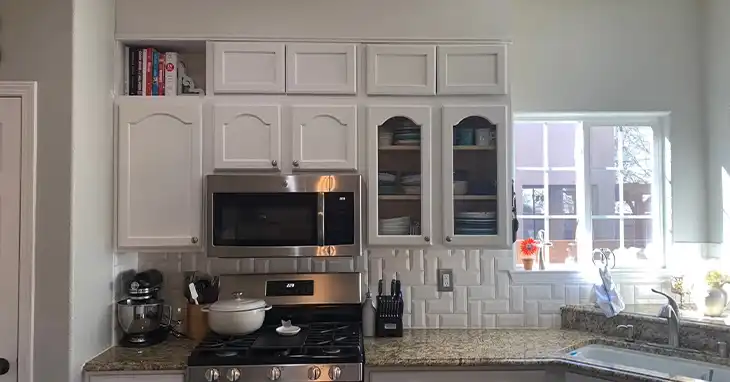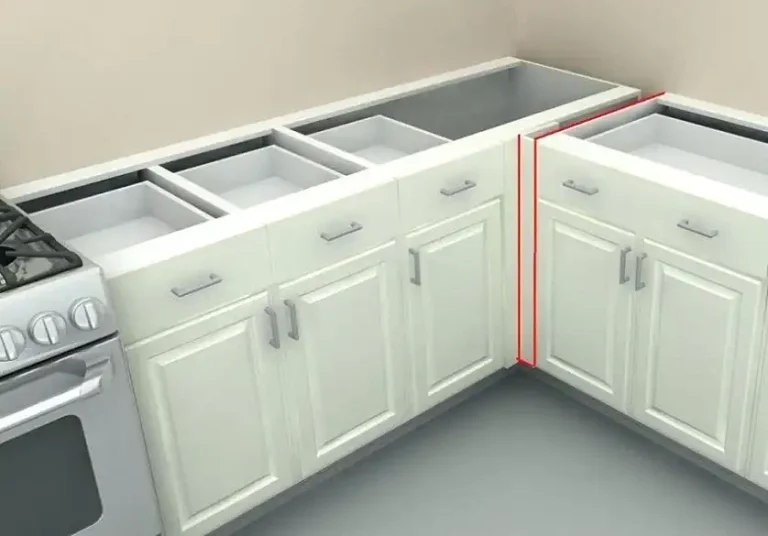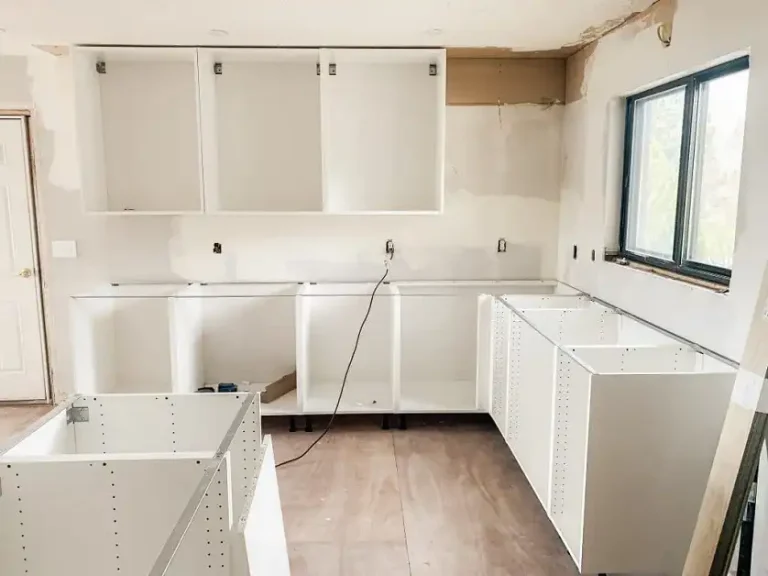How Can You Tell If Cabinets Are Wood or Veneer?
When it comes to kitchen or bathroom cabinets, the material they’re made of can significantly impact their durability, longevity, and overall aesthetic appeal. Two of the most common materials used in cabinet construction are solid wood and wood veneer.
Solid wood cabinets are made entirely from solid wood boards or planks, while wood veneer cabinets have a thin layer of wood applied over a core material, such as particleboard or medium-density fiberboard (MDF). Knowing the material of your cabinets is crucial for understanding their maintenance requirements, potential resale value, and overall cost.
But how can you tell the difference between these two materials? Let’s explore the various methods to identify whether your cabinets are made of solid wood or wood veneer.
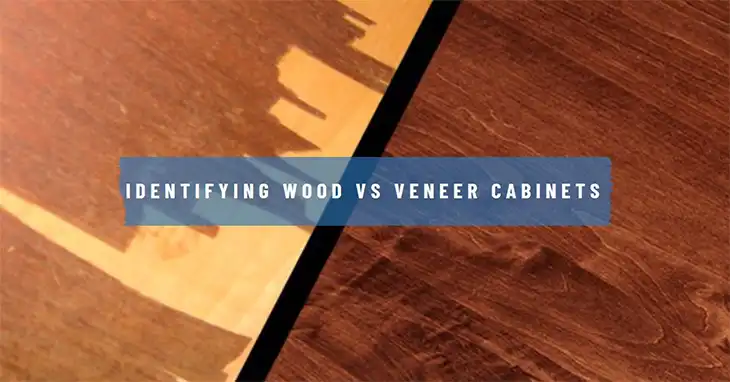
Method #1: Visual Inspection
One of the easiest ways to differentiate between solid wood and wood veneer cabinets is through visual inspection. Here’s what to look for:
Grain Pattern
Solid wood: Solid wood cabinets will have natural variations, knots, and imperfections in the wood grain pattern across their surfaces.
Veneer: Wood veneer cabinets often display repetitive or mirrored wood grain patterns across doors, drawers, and panels, as the veneer is a thin layer applied over a core material.
Color and Finish
Solid wood: Solid wood cabinets typically have a consistent color and finish throughout, although slight variations may occur due to the natural characteristics of the wood.
Veneer: In wood veneer cabinets, you may notice that the core material (such as particleboard or MDF) has a different color than the veneer, which can be visible on exposed edges, corners, or cuts.
Hardware Installation
Solid wood: Sturdy construction methods, such as screws or dowels, are typically used to attach hardware like hinges and drawer pulls to solid wood cabinets.
Veneer: While not always a reliable indicator, wood veneer cabinets may have nails, staples, or glue used for quicker assembly, as the veneer itself is not as structurally sound as solid wood.
Edge Banding
Solid wood: Solid wood cabinets will not have visible edge banding or veneers applied to their edges, as the material is consistent throughout.
Veneer: Wood veneer cabinets often have edge banding or a thin veneer applied to the cabinet edges to create a seamless look.
Method #2: Touch and Weight
Another way to distinguish between solid wood and wood veneer cabinets is by considering their texture and weight.
Texture
Solid wood: Solid wood cabinets will have a natural wood grain texture with slight variations, reflecting the authentic material.
Veneer: Wood veneer cabinets typically have a smoother, more uniform surface that may feel artificial or plasticky due to the veneer layer.
Weight
Solid wood: Solid wood cabinets are significantly heavier due to their dense, solid wood construction.
Veneer: Wood veneer cabinets are generally lighter in weight because of their hollow core construction, which often consists of particleboard or MDF.
Method #3: Construction and Details
Examining the construction and details of your cabinets can also provide valuable clues about the material used.
Drawer Interiors
Solid wood: In solid wood cabinets, the same wood species is typically used for the drawer interiors and cabinet exteriors.
Veneer: Wood veneer cabinets often have different materials, such as plywood or laminate, used for the drawer interiors.
Doors and Frames
Solid wood: Solid wood cabinets may feature dovetail joints or mortise and tenon joints for strong construction, although these joints may not always be visible.
Veneer: Wood veneer cabinets often have simpler butt joints, dowel construction, or glued/nailed frames due to the limitations of the veneer material.
Carvings and Details
Solid wood: Solid wood cabinets can feature intricate carvings and details due to the strength and durability of the material.
Veneer: Carvings or detailed designs might be difficult or impractical on wood veneer cabinets due to the thinness of the veneer layer.
Back Panels
Solid wood: If accessible, solid wood cabinets will typically have solid wood back panels.
Veneer: Wood veneer cabinets often utilize inexpensive materials like particleboard or laminate for the back panels.
Method #4: Sound Test
A simple sound test can also provide insight into the cabinet material. Gently knock or tap on the cabinet surface, and listen for the following:
Solid wood: Solid wood cabinets will produce a dull, solid thud or resonant sound.
Veneer: Wood veneer cabinets may sound hollow or have a higher-pitched tone due to their core construction.
Additional Methods to Find Cabinet Material
Manufacturer Information
If you’re unsure about the cabinet material, check the product descriptions, and labels, or contact the manufacturer directly for more information. They should be able to provide details on the materials used.
Price Point
Generally, solid wood cabinets are more expensive than wood veneer options due to the higher cost and quality of the materials involved.
Age and Style
Older cabinets, particularly those from before the 1970s, are more likely to be made of solid wood. Contemporary styles and cost-effective options often utilize wood veneer for its affordability.
Professional Inspection
If you’re still unsure about the cabinet material, consider seeking advice from a professional carpenter, woodworker, or home inspector. Their expertise can provide a definitive assessment based on a thorough examination of your cabinets.
Final Words
Identifying whether your cabinets are made of solid wood or wood veneer is essential for understanding their durability, maintenance requirements, and potential resale value. By considering factors such as grain patterns, color consistency, construction details, texture, weight, and sound, you can make an informed decision about the material used in your cabinets. Remember, both solid wood and wood veneer cabinets have their advantages and disadvantages, so choose the material that best suits your needs, budget, and personal preferences.
frequently asked questions
Can wood veneer cabinets be refinished or painted?
While it is possible to refinish or paint wood veneer cabinets, the process can be more challenging and may not yield the same results as with solid wood. The veneer layer is thin, and improper preparation or application can cause the veneer to peel or bubble. Professional assistance is recommended for best results.
Are wood veneer cabinets less durable than solid wood?
Generally, yes. Solid wood cabinets are more durable and resistant to wear and tear over time. Wood veneer cabinets can be prone to chipping, peeling, or delamination if not properly maintained.
Can I mix and match solid wood and wood veneer cabinets in the same kitchen?
While it’s possible to mix and match cabinet materials, it’s generally recommended to maintain a consistent look and finish throughout the space. Mixing solid wood and wood veneer may create a visually inconsistent appearance.
Are wood veneer cabinets less expensive than solid wood?
Yes, wood veneer cabinets are typically more cost-effective than solid wood cabinets due to the use of less expensive core materials and the thinner veneer layer.
Can I stain or change the color of wood veneer cabinets?
It’s possible to stain or change the color of wood veneer cabinets, but the process can be tricky and may not yield the desired results. The veneer layer is thin, and improper preparation or application can cause issues. Professional assistance is recommended for best results.

